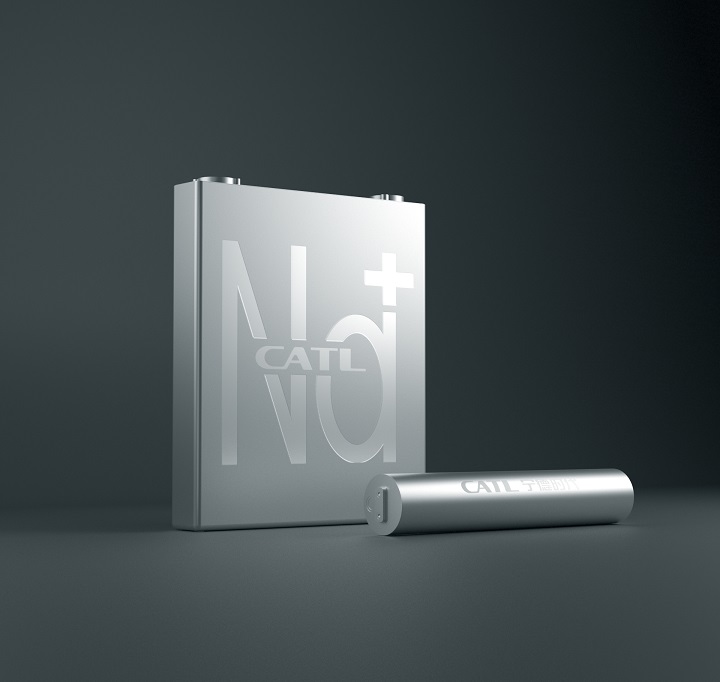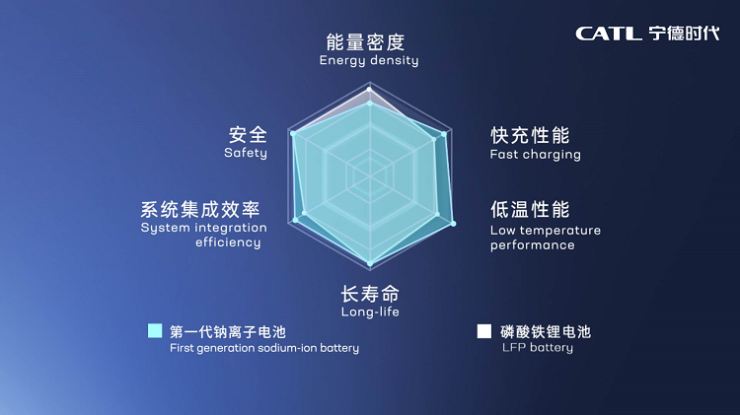CATL introduced the first generation of sodium-ion battery
 CATL's first-generation sodium-ion battery
CATL's first-generation sodium-ion battery
Contemporary Amperex Technology Co., Ltd. (CATL) launched the first-generation sodium-ion battery with the world's highest energy density of 160Wh/kg on July 29, which attracted great attention from the battery industry.
Breaking through the bottleneck of sodium-ion battery technology
The sodium-ion battery has a similar working principle to the lithium-ion battery. Sodium ions also shuttle between the cathode and anode. However, compared with lithium ions, sodium ions have a larger volume and higher requirements regarding structural stability and the kinetic properties of materials. This has become a bottleneck for the industrialization of sodium-ion batteries.
Advantages of sodium-ion batteries:
sodium resources are more abundant, and the global distribution is even; the cost of sodium-ion batteries is about 30% lower than that of lithium batteries, and the cost advantage is obvious; sodium-ion batteries are safer and are not easy to produce lithium dendrites.
Disadvantages of sodium ion batteries:
lower energy density of sodium ion batteries; short cycle life; and the industrial chain is still incomplete.
CATL has been dedicated to the research and development of sodium-ion battery electrode materials for many years. In terms of cathode materials, CATL has applied Prussian white material with a higher specific capacity and redesigned the bulk structure of the material by rearranging the electrons, which solved the worldwide problem of rapid capacity fading upon material cycling. In terms of anode materials, CATL has developed a hard carbon material that features a unique porous structure, which enables the abundant storage and fast movement of sodium ions, and also an outstanding cycle performance.
Based on a series of innovations in the chemistry system, CATLĄŻs first generation of sodium-ion batteries has the advantages of high-energy density, fast-charging capability, excellent thermal stability, great low-temperature performance and high-integration efficiency, among others. The energy density of CATLĄŻs sodium-ion battery cell can achieve up to 160Wh/kg, and the battery can charge in 15 minutes to 80% SOC at room temperature. Moreover, in a low-temperature environment of -20ĄăC, the sodium-ion battery has a capacity retention rate of more than 90%, and its system integration efficiency can reach more than 80%. The sodium-ion batteriesĄŻ thermal stability exceeds the national safety requirements for traction batteries. The first generation of sodium-ion batteries can be used in various transportation electrification scenarios, especially in regions with extremely low temperatures, where its outstanding advantages become obvious. Also, it can be flexibly adapted to the application needs of all scenarios in the energy storage field.
 Advantages of the first-generation sodium-ion battery performance
Advantages of the first-generation sodium-ion battery performance
Advantages of CATL sodium ion battery:
1. The energy density of the cell reaches 160Wh/kg (the next generation breaks through 200Wh/kg)
2. Charging to 80% in 15 mintutes
3. There is More than 90% discharge retention rate at minus 20ĄăC
The first generation of sodium-ion batteries can be used in various transportation electrification scenarios, especially in regions with extremely low temperatures, where its outstanding advantages become obvious. Also, it can be flexibly adapted to the application needs of all scenarios in the energy storage field.
Edit by editor



